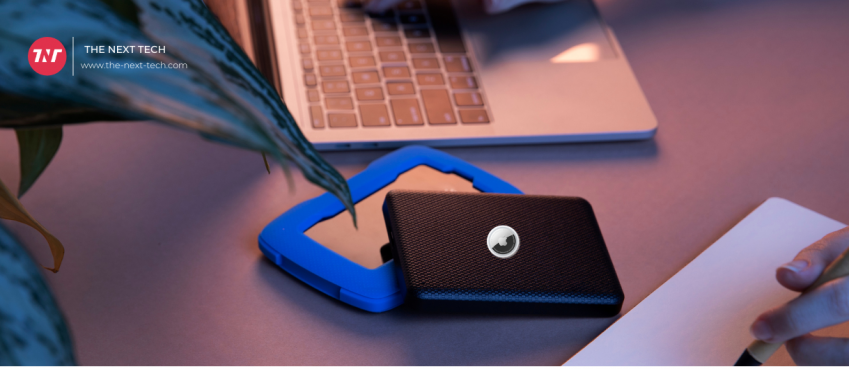
Apple’s iOS 13 answers the bell with Low Data Mode
We can never get enough mobile data, but we also want to make every megabyte count. It’s much harder to achieve either when apps and system functionalities automatically nib away at your data allowance. Now, thanks to Apple’s customer-centric Low Data Mode,iOS 13 users can now restrain their apps from drawing down their data without their knowledge.
Earlier this year, we discussed several anticipated changes Apple was likely to implement to its hardware and software. Of all the hardware and software updates, we tagged iOS 13 the most anticipated. With the new Low Data Mode now a reality, perhaps our anticipations were spot on, given the vast consumer interest in mobile-data-saving solutions that will likely popularize this iOS 13 addition.
The background data restriction tool — Low Data Mode — comes with iOS 13 devices. Akin to the Low Power Mode that was introduced in 2015, the Low data Mode helps conserve data on your iOS device by reducing or completely curbing app activities that give rise to automatic data consumption.
In this article, we dig deeper into exactly what Low Data Mode is, its advantages, and how to use it to conserve your mobile data.
What is Low Data Mode?
Low Data Mode is a mobile data conservation tool that Apple has made available to devices running iOS 13. On an intuitive user interface, users can easily switch on or off a function that controls the rate at which apps in an iOS device send out automated requests that draw down data. This can mean different things for different apps and functions, depending on their operations and how you tune the Low Data Mode settings.
For some apps, it might result in reduced frequency of notifications; for others, its automatic download of fresh app contents.
Here’s a closer look at the effects of turning on the Low Data Mode on various apps. According to Apple’s support page addressing this feature, the Low Data Mode, when activated, can:
- Prevent apps from using network data while they’re not actively in use.
- Stop background apps from refreshing its contents.
- Prevent apps from downloading updates or uploading backup files, including in-built apps like iCloud Photos.
- Minimize data consumption from automatic streaming activities, including music streaming.
- Prevent news apps from pre-fetching news articles.
- Turn off video auto-play, automatic downloads, and automatic updates from the App Store.
- Whittle down FaceTime video’s bitrate to tune it to a lower bandwidth.
- Reduce or completely stop podcasts from receiving feed updates, allowing downloads to be done only manually or automatically on other networks.
Another crucial aspect of the Low Data Mode is its control over data usage on specific cellular or Wi-Fi networks — something that many users will greatly appreciate.
The advantage of using low data mode to restrain data consumption temporarily
Low Data Mode is primarily designed to serve when data preservation becomes a necessity, and not to save data all the time. It can deprive users of optimum browsing and streaming experience, so Apple is keen on making it easy for users to turn it on or off.
The Low Data Mode can come in really handy during crucial moments like when you approach the limits of your data plans.You’ll also get to appreciate it more when you need to limit the data usage across your Apple ecosystem, which might drag down the connection on your main device. It can also help boost your browsing speed when you’re on a slow network by curbing background activities that might possibly drag down the network speed.
And as a temporary measure, it doesn’t prevent you from using your data whenever you want to. While the Low Data Mode is active, you can still carry out manual downloads and uploads that have been prevented from taking place automatically.
Also read: 210+ Best Pick Up Lines: Funny, Cheesy, & Flirty Pickup Lines For Boys & Girls
Using Low Data Mode for specific networks
Depending on your situation, this aspect of the Low Data Mode can be an advantage or a bane. You can turn it on for a specific Wi-Fi or cellular network. While this can prove expedient when you only need to turn it on for one or two networks, it can be quite hectic when you want to run the mode across multiple networks. Then, you need to visit the settings page and turn it on for one network at a time. But gladly, the setting steps for activating the mode for either Wi-Fi or Cellular networks are roughly similar.
How to turn on Low Data Mode
First, let’s look at the steps for turning it on for cellular networks:
- Launch your Settings app.
- Go to Cellular > Cellular Data Options.
- On the next page, toggle on the “Low Data Mode” option.

Caption: How to turn on the Low Data Mode for cellular networks
- To turn it on for two SIMs in a dual SIM phone, repeat step 1 – 3 for each of the SIMs.
Now, to turn on Low Data Mode for Wi-Fi networks:
- Launch your Settings app.
- Tap the Wi-Fi option, and then tap the “i” information button next to the Wi-Fi network you want to place in the Low Data Mode.
- Next, you’ll find a toggle button beside the Low Data Mode. Turn it on.

Caption: How to turn on the Low Data Mode for Wi-Fi Network
- Repeat steps 1 – 3 for any other Wi-Fi network you want to extend the mode into.
Now, immediately after this, your iCloud network will updated for the Low Data Mode preference for the selected Wi-Fi network.
Also read: Everything You Need To Know About CivitAI (2024 Guide)
Do all iOS 13 devices support Low Data Mode?
Yes, Low Data Mode is only supported in Apple devices that run iOS 13. If your Apple device isn’t compatible with iOS 13, then you won’t be able to enjoy this feature. iPhone models compatible with iOS 13 include iPhone SE, iPhone 6s, iPhone 6s Plus, iPhone 7, iPhone 7 Plus, iPhone 8, iPhone 8 Plus, iPhone X, iPhone XR, iPhone XS, and iPhone XS Max. iPhone 11, iPhone 11 pro, and iPhone 11 Pro max all come with iOS 13 as their default OS. Other Apple devices that are compatible with the new function include the iPod Touch and the iPadOS.
And the process of turning the device on or off is roughly similar across all devices. But, obviously, you won’t be able to access the option for activating the mode for cellular network on iPads that aren’t cellular models.
Final words
Low Data Mode is a great consumer-friendly step for Apple, but the mobile data conservation system is not perfect just yet. Many users have called for the tech giants to make it easier to cover multiple networks and tweak the restrictions on certain app activities in the mode. We believe that Apple will take heed to the feedback it’s gotten for the release of this new feature, and it will tweak the feature in upcoming updates to make it more convenient.
Top 10 News
-
01
[10 BEST] AI Influencer Generator Apps Trending Right Now
Monday March 17, 2025
-
02
The 10 Best Companies Providing Electric Fencing For Busines...
Tuesday March 11, 2025
-
03
Top 10 Social Security Fairness Act Benefits In 2025
Wednesday March 5, 2025
-
04
Top 10 AI Infrastructure Companies In The World
Tuesday February 11, 2025
-
05
What Are Top 10 Blood Thinners To Minimize Heart Disease?
Wednesday January 22, 2025
-
06
10 Top-Rated AI Hugging Video Generator (Turn Images Into Ki...
Monday December 23, 2024
-
07
10 Top-Rated Face Swap AI Tools (Swap Photo & Video Ins...
Friday December 20, 2024
-
08
10 Exciting iPhone 16 Features You Can Try Right Now
Tuesday November 19, 2024
-
09
10 Best Anatomy Apps For Physiologist Beginners
Tuesday November 12, 2024
-
10
Top 10 Websites And Apps Like Thumbtack
Tuesday November 5, 2024







